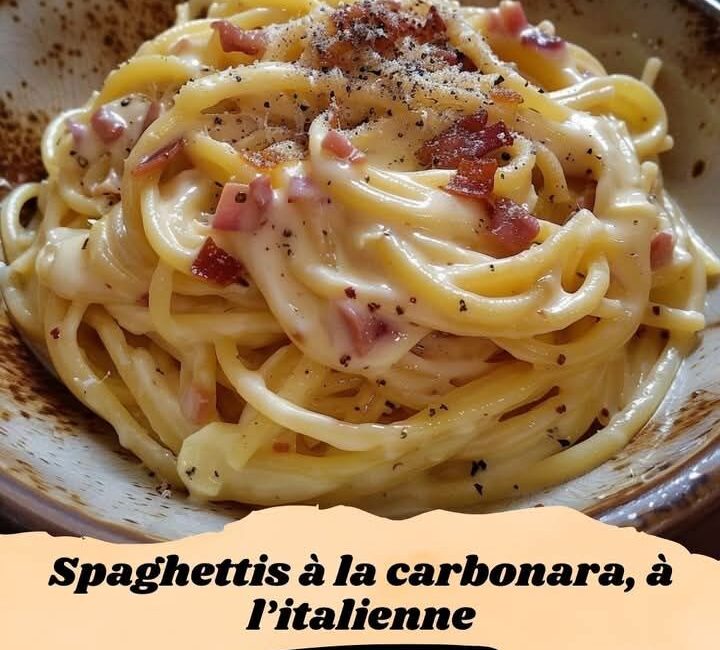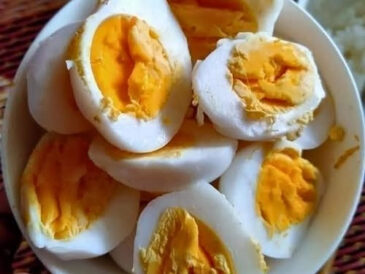Black pepper is essential in Carbonara, not only to add spice but also to contribute a touch of freshness and depth to the dish. Freshly ground black pepper is preferred over pre-ground, as it provides a livelier, more intense flavor. It is generously added to the sauce just before serving.
2.6. Salt
Although guanciale and cheese are already salty, it is important not to forget to add salt to the pasta cooking water. This enhances the flavors and helps to bring everything together.
3. The Technique for Preparing Carbonara
Making Carbonara requires special attention, as timing is crucial for creating a smooth and creamy sauce without cooking the eggs. Here are the detailed steps to prepare Spaghetti alla Carbonara like a true Roman:
3.1. Cooking the Pasta
Start by bringing a large pot of salted water to a boil. Add the spaghetti and cook them for 1 to 2 minutes less than the package’s cooking time, as the pasta will continue to cook once mixed with the hot sauce. Once the pasta is cooked al dente, reserve a bit of the cooking water to adjust the sauce if necessary.
3.2. Cooking the Guanciale
In a large skillet, heat a little olive oil and add the guanciale cut into pieces. Let it cook slowly over medium heat for about 5 to 7 minutes until it becomes golden and crispy. The guanciale should be crispy but not too hard. Remove the skillet from the heat once the guanciale is ready.
3.3. Mixing the Eggs and Cheese
While the guanciale is cooking, prepare the sauce by whisking the eggs in a large bowl with the grated cheese. Add a generous amount of freshly ground black pepper. The mixture should be smooth and creamy.
3.4. Combining the Pasta and Guanciale
Once the pasta is cooked, drain it but reserve some cooking water to adjust the sauce. Immediately add the pasta to the skillet with the guanciale. Stir well to ensure that the pasta absorbs the guanciale fat, but do not place the skillet back on the heat to avoid cooking the eggs.
3.5. Adding the Egg Sauce
Quickly pour the egg and cheese mixture over the hot pasta, stirring constantly so that the heat from the pasta gently cooks the eggs. If the sauce is too thick, add a little pasta cooking water to make it smoother.
3.6. Serving
Serve the Spaghetti alla Carbonara immediately, adding a little extra grated cheese and a final sprinkle of freshly ground black pepper. It’s important to serve the dish right away, as the egg sauce can lose its creamy texture if left too long.
4. Tips and Variations of Carbonara
While traditional Carbonara is simple, there are a few tips to ensure perfect results, as well as some variations that can be interesting if you want to experiment with different flavors.
4.1. The Importance of Quality Eggs
The eggs should be fresh and of good quality. In Italy, farm-fresh eggs, from free-range chickens, are widely used for this dish. A high-quality egg yolk will give the sauce a creamier and richer texture.
4.2. The Role of Pepper
Pepper is often underestimated in Carbonara. Don’t be afraid to add plenty, as it plays a crucial role in the overall taste of the dish. You can even experiment with different types of pepper (white pepper, Sichuan pepper, etc.) to explore flavor nuances.
4.3. Adding Vegetables (Optional)
Some modern variations of Carbonara include vegetables like peas or asparagus, but these ingredients are not part of the traditional recipe. If you want to incorporate vegetables, go for a more contemporary version, but keep in mind it will change the flavor and experience of the dish.
4.4. Vegetarian Version
For a vegetarian version of Carbonara, you can replace the guanciale with alternatives like smoked tofu or mushrooms, though this also changes the traditional taste of the dish. The result will be different, but the textures can provide an interesting take on the classic.
4.5. Carbonara with Cream?
Traditional Carbonara does not contain cream. If you see a Carbonara made with cream, know that it’s likely a revamped version, far from the authentic Roman recipe. The creamy sauce comes from the eggs and cheese, which together create a rich, velvety texture.
5. Conclusion: An Eternal Dish
Spaghetti alla Carbonara is not just a dish; it’s a moment of sharing, conviviality, and tradition. Preparing a Carbonara is like diving into the history of Rome, tasting the simplicity of local ingredients, and experiencing one of the world’s most flavorful recipes. If you follow the steps, use quality ingredients, and resist the temptation to alter the recipe too much, you’ll enjoy a dish that lives up to the reputation of Italian cuisine. Buon appetito!




